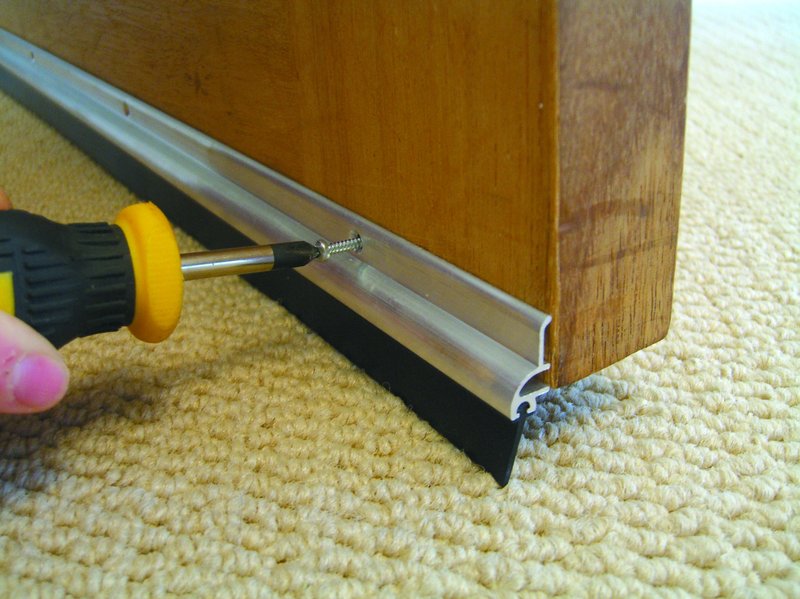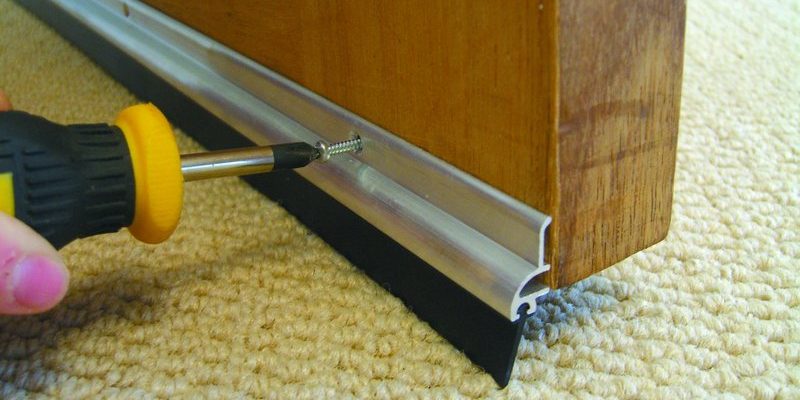
Let’s be real—a door seal is supposed to stop drafts, pests, and water, not become a welcome mat for outside grit. This problem can pop up with any brand or type, whether you’re rocking a Schlage smart lock, a standard wooden front door, or a storm door you picked up at Home Depot. The culprit could be installation issues, poor cleaning habits, or just an old seal that’s seen better days.
If you’re ready to tackle that stubborn grime and actually keep your entryway clean, you’re in the right spot. Here’s how to troubleshoot a door seal that’s collecting debris—and why it keeps happening in the first place.
Why Door Seals Collect Debris So Easily
The main job of a door seal (sometimes called a weatherstrip) is to sit in the gap between your door and the frame. Think of it like the rim on a coffee mug—it keeps what you want inside and everything else out. But when that seal starts looking like the bottom of your shoe after a hike, something’s off.
Here’s the thing: *Most seals are made of flexible rubber or foam. They’re meant to squish and adapt as your door opens and closes,* but that squishiness can create little nooks for dirt and junk to sneak in and hang out. If the seal is too loose, bits of debris can wedge in and build up over time. On the other hand, if the seal is too tight or misaligned, it can scrape dust, leaves, or sand right off your shoes—or from outside—each time the door moves.
Other times, it’s just gravity at work. When the bottom seal (or sweep) gets old or damaged, it can fold or split, making a cozy home for whatever rolls by. And let’s not forget: *High traffic areas or storm doors tend to pick up even more mess,* especially during rainy or windy seasons.
Signs Your Door Seal Needs Troubleshooting
So, how do you know it’s really the seal that’s the problem? Let me lay out some red flags.
- Persistent dirt or leaves right along the seal, even after you sweep or vacuum the area.
- Drafts or small amounts of water sneaking in under the door, especially during bad weather.
- The seal looks cracked, squashed, or misaligned. Sometimes you’ll even spot visible gaps when the door is closed.
- Difficulty opening or closing the door. If the door feels sticky or drags, the seal might be folded or jammed with debris.
Honestly, seals aren’t made to last forever. If yours is original to the house or hasn’t been replaced since the last major code update, it could be overdue for a fix. Plus, if you have a smart lock or keypad, grit in the seal can even interfere with how the door sits in the frame, which can mess with locking or syncing functions.
Cleaning a Door Seal That’s Packed With Debris
You might be wondering, “Can’t I just wipe it off?” Yes, but there’s a trick to it. Debris can get buried in the tiny creases and corners of the seal, like peanut butter in the ribs of a jar lid. Here’s how to do it right.
- Open the door fully so you can reach every part of the seal without straining.
- Use a handheld vacuum or a soft brush to remove loose dirt. Gently work along the length of the seal, paying extra attention to corners.
- Dampen a cloth with warm, soapy water, and wipe down the seal. For stubborn gunk, a toothbrush can work wonders, especially in tight spots.
- Dry the seal completely before closing the door. Moisture left behind can attract more debris or even cause mold over time.
Here’s a pro tip: If your weatherstrip is removable, take it off and wash it in the sink. You’ll be amazed at the difference a proper clean can make—it’s like resetting the whole system. But if the seal falls apart, cracks, or won’t stay put after cleaning, it’s time to move on to the next step.
How to Tell if the Door Seal Needs Replacing
Cleaning works wonders—up to a point. If the seal keeps collecting debris after you’ve scrubbed it, it’s probably worn out. Think of it like a stretched-out rubber band: it just can’t snap back into place.
Check for these signs that you need a new seal:
- The rubber is brittle, cracked, or honestly just looks tired. Old seals lose their flexibility and can’t form a tight barrier anymore.
- Debris keeps working its way inside, even when you’ve cleaned the area thoroughly.
- The seal won’t sit flat, or it keeps popping out of the groove.
- Visible light shines through the gap when the door is closed—especially at the bottom.
Replacing a seal isn’t rocket science, but you do need the right size and type. If you’re unsure, bring the old one with you to the hardware store. Most brands, like M-D Building Products or Frost King, offer universal options that fit standard doors, but custom doors might need a specialty seal.
Fixing Alignment and Installation Problems
Sometimes, it’s not the seal itself—it’s how it’s installed. Poor alignment can turn even the fanciest sweep or gasket into a dirt collector. If you see uneven wear, or only one side is caked with debris, it’s time to look closer.
Let me explain how to check and fix alignment:
- Close the door and inspect the seal from the inside and outside. Look for places it doesn’t touch the frame evenly.
- Gently push on the door to see if it rocks or has extra play. Gaps usually mean you need to reposition the seal or the door itself.
- If you installed the seal yourself, double-check that it matches the groove or track on your door. Sometimes, swapping to a different profile (like a bulb instead of a flat strip) can solve the problem.
- For stubborn alignment issues, try adjusting the hinges or strike plate. Even a tiny tweak can help the door close more snugly and keep debris out.
Sometimes, it’s the little adjustments—a turn of a screw, a swap for a thicker seal—that finally gets everything lining up just right. Patience and a flashlight can be your best troubleshooting tools here.
Choosing the Right Type of Door Seal for Your Home
Not all seals are created equal. Some are built more like slippers (soft, flexible, easy to clean), while others are rugged like boots (rigid, tough, but harder to clean). Your climate, door type, and how much traffic your door gets all play a role.
Here’s a quick breakdown of common options:
- Foam weatherstripping: Cheap, easy to install, but wears out fast and collects debris quickly.
- Rubber bulb seals: More durable, great for uneven gaps, and are less likely to trap dirt. Good for exterior doors.
- Vinyl sweeps: Often used on the bottom, can handle more abuse, but might be harder to clean if debris gets stuck in the grooves.
- Felt strips: Old-school, but affordable. They trap dust easily and usually need frequent replacing.
If you want a longer-lasting fix, pay attention to the seal’s rating for your climate and door style. For storm doors or high-traffic entries, go with a heavier-duty seal—maybe even one with a built-in drip edge for extra protection.
Preventing Future Buildup and Keeping Your Door Clean
It’s easier to stop debris from collecting in the first place than to clean it every week. Setting up a simple routine can save you time and frustration.
Here’s how to keep things tidy:
- Sweep the entryway regularly. Even a quick pass every few days makes a big difference.
- Add a quality doormat outside, and if you’re feeling ambitious, a boot tray inside.
- Check and clean your door seal monthly. A quick wipe-down keeps little bits from building up into big messes.
- Inspect for damage after storms or high-traffic periods, especially if you notice the door isn’t closing as tightly as it used to.
It might feel like busywork, but trust me—just a few minutes here and there can keep your seal working its best and your entryway free of grit.
When to Call a Pro or Consider a Different Solution
If you’ve tried cleaning, adjusting, and even swapped out the seal, but debris keeps piling up, it could be time to call in some help. Sometimes, issues with the door frame, poor construction, or uneven floors are at fault. A professional can spot problems you might miss—like warped wood, water damage, or even a shifted foundation.
Another option? Look into door sweeps that include built-in brushes or magnetic strips, which do a better job of keeping debris at bay. For tech lovers, some smart door kits even sync up with sensors to alert you if the door isn’t closing properly, which can help diagnose hidden problems before they turn into bigger headaches.
Don’t be afraid to ask for help if you’re stuck. Sometimes the peace of mind (and a truly clean entryway) are worth a quick pro visit.
Wrapping Up: Keep Debris Out and Comfort In
A door seal that’s collecting debris isn’t something you just have to put up with. Whether you scrub, tweak, or swap out the old gasket, there’s always a fix—often quicker than you think. The trick is to catch the problem early, choose the right seal, and keep up with a little routine cleaning.
In the end, a tight, clean door seal means less mess tracked inside, better energy efficiency, and even extra peace and quiet. Your doorway will thank you—and so will your socks.
